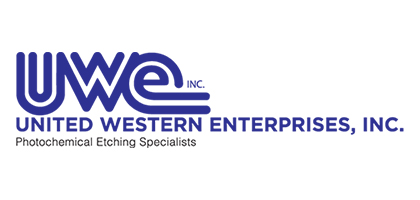What You Need to Know About Chem Etching as an EMI Shielding Manufacturing Method
May 2023
It happens all the time—manufacturers that are still building up their experience in the industry will talk to more seasoned metal part manufacturers that specialize in EMI shielding, and will learn all about chem etching and its many advantages over more traditional manufacturing methods.
In today’s landscape of evolving technology, electromagnetic interference (EMI) lays out a critical threat to electric devices, and companies that produce everything from mobile phones to radios are scrambling to take the necessary steps to avoid any potential damage, experience product recalls, and tarnish their brand’s name. According to an article published by the Journal of Applied Polymer Science titled “EMI Shielding: Methods and Materials–A Review” by S. Geetha and others, a study was conducted examining a wide range of industries including military, industrial, commercial and consumer products that showed greater value in their investment in EMI shielding when utilizing chem etching, also known as photochemical etching, for manufacturing the required EMI shielding components.
When selecting engineering options, companies need to make sure they are profiting from the best EMI shielding, and United Western Enterprises is known across the country for offering the best EMI shielding for electronic parts is chem etching for a number of reasons that will be covered in this article, along with why chem etching is the best manufacturing option for a variety of metals and metal thicknesses.
What Are the Sheet Metal Fabrication Methods for EMI Shielding?
Before we delve into chem etching as the best manufacturing method for EMI shielding, let’s first come to understand what the most popular options are.
- Laser Cutting – This is a manufacturing process that utilizes a laser beam to cut desired shapes in a sheet of metal. While laser cutting can enable manufacturers to produce EMI shielding parts that are precise and cost-effective for small batch orders, the heat produced by the laser can lead to flaws in the part, such as cracks, burrs, and other deformities.
- CNC Machining – This method can be ideal for a number of jobs and is known for being an especially popular option for jobs that require production of a large number of repeatable parts. However, the force and pressure created by the punching in this process can cause weak points and other deformities in EMI shielding components.
- Stamping – This is another popular option when large part quantities are ordered. In this process, progressive dies are used to form the sheet metal into the ideal shielding part. The tooling required for this process can be expensive and take weeks to produce, and the force used in this process can also cause damage to the pieces.
- Chem Etching – Also known as photochemical etching, is a process that uses a photoresist chemical to dissolve the unwanted parts of the metal sheet, leaving behind only the desired part for the EMI shielding pieces. Because no heat or pressure is used, this is an ideal way to produce any volume of EMI shielding parts without the risk of damage, and it is highly cost-effective.
When considering your options, chem etching for EMI shielding parts will likely be top of mind. When you call our experts at United Western Enterprises, we can review your designs and requirements, and examine the ways chem etching can take your project to the next level.
Why Multiple Industries Use Chem Etching Services for EMI Shielding in the Prototyping Phase as Opposed to Laser Cutting
Many United Western Enterprise clients spanning multiple industries have, when in the prototyping phase, established that their shields need small production runs, and that chem etching or laser cutting are the two most discussed methods, as both can do this process at low cost and tolerance levels. However, when organizations make their final decision on which method best suits their needs for manufacturing EMI shielding parts, this is usually predicated on design complexity, the type of required metal material, and production volume. Ultimately, most invest in chem etching because laser cutting’s extreme heat can cause fractures and burrs to form on the shielding components, while chem etching eliminates these risks. In addition, laser cutting is not ideal if the design is complex, or if production runs are small to mid-size.
What Is Chem Etching and Why Is It Ideal for the Manufacturing of EMI Shielding Components?
Chem etching is a batch processing manufacturing method that utilizes a chemical solution to dissolve unwanted metal materials from the desired part design. Metal chem etching is more commonly used for small or mid-size production runs, especially in prototyping, and is known for being cost-effective. It is also ideal for production runs in which thinner metal sheets up to .040” are used, and the design is multi-featured, such as a design one would commonly find for an EMI filter. Then, the chem etching process can be done so that all of the intricate and complex design elements can be machined in a simultaneous manner to save organizations a great degree of time and cost.
Call United Western Enterprises to Learn About Chem Etching for EMI Shielding
The manufacturing method, metal type, and metal thickness can all play a role in how effective EMI shielding parts are. United Western Enterprises has more than 50 years of experience in working with clients spanning a wide range of industries to create thin metal parts using chem etching, and we are regarded as the top chem etching company specializing in EMI shielding, trusted by the US military, top electronic brands, and other types of organizations that demand flawless quality. Send us your design and give our team a call to learn how our chem etching process can help you achieve all of your goals surrounding the production of EMI shielding parts.
